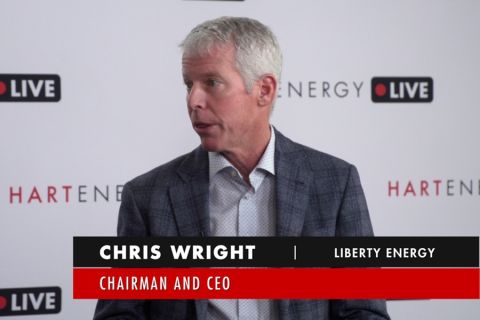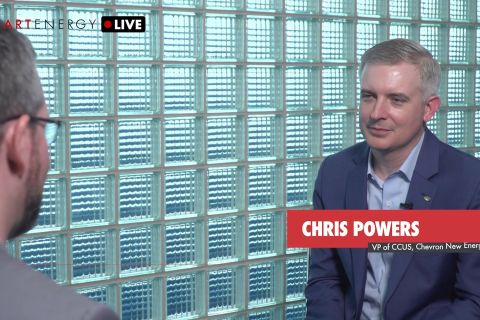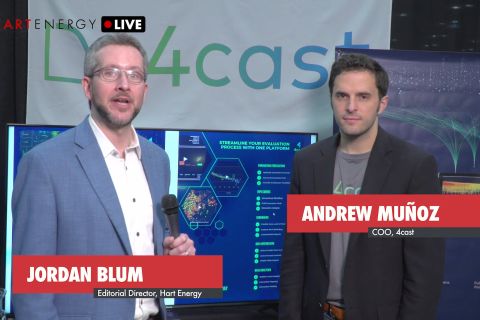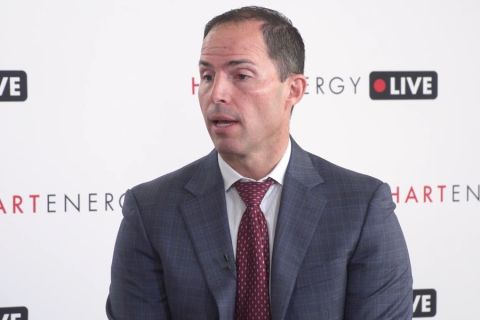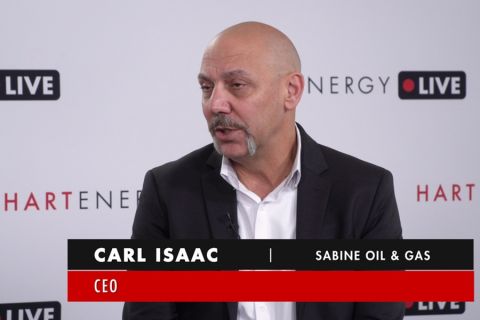
Patrick McWilliams, NGP Partner. NGP, fresh off the sale of two portfolio companies to Civitas Resources for $4.7 billion, is continuing to raise capital for Fund XIII, but McWilliams said the private equity firm is likely to add just a handful of new management teams to its stable when the fund closes. (Source: Hart Energy)
SAN ANTONIO—NGP, fresh off the sale of two portfolio companies to Civitas Resources for $4.7 billion, is continuing to raise capital for Fund XIII, but NGP Partner Patrick McWilliams said the private equity firm is likely to add just a handful of new management teams to its stable when the fund closes.
Speaking at TIPRO’s summer conference, McWilliams said he suspects that 70% to 80% of the portfolio capital will be funneled into NGP’s existing management teams to continue growth.
However, he said NGP is always looking to add great entrepreneurs and investors. The new fund will be focused on traditional oil and gas opportunities, particularly in the upstream, but in the midstream and service sector, as well. McWilliams said he leans toward oil but is largely basin agnostic and more focused on returns.
“I suspect we’ll have two to three new teams” that will be added to the fund, he said. “It will be invested in low breakeven upstream opportunities, i.e., the Permian, the Haynesville, Marcellus, Bakken and Eagle Ford—places where, you know, you have downside protection and have good … half-cycle returns.”
NGP has already made commitments to Permian-focused companies this year, including $100 million in backing for Wing Resources VII LLC, a mineral and royalty company.
McWilliams said Fund XIII, which is reportedly attempting to raise $7 billion largely focused on the Permian, is admittedly a challenge.
McWilliams said NGP puts investors into three “buckets” that have a variety of experiences with the industry, including price collapses in 2014 due to OPEC’s tactical attack on North American oil and gas and in 2020 when COVID-19 broke the back of WTI and plunged it into negative prices.
Others have sworn off the industry because of ESG concerns.
“You’ve got one bucket that says, ‘please don’t ever call me again,’” he said. “It is dogmatic, it’s political. It is, you know, typically … the institutions that you can think of … in certain geographic locations that just say, ‘look, we’re out of that business. Thank you very much.’”
Another bucket represents a counterpoint to that view, “which says, ‘I’ve never seen any better time to invest in this sector. Demand has recovered. Demand is increasing. There’s no capital. The profitability and discipline makes really good sense right now. So, I’m really interested in, how fast can you put my capital to work?’”
The largest bucket—and the one that is taking NGP the most time to convert to investment—is open-minded to traditional energy investment.
“It feels like we’ve got good traction, but there’s a lot of work to be done,” he said.
Some investor hesitancy is based on whether the oil and gas industry has truly changed since the days in which companies pushed growth for growth’s sake and is now fully committed to capital discipline.
That bucket “really hasn’t underwritten the [industry] since 2017. You know, most of the GPs [general partners] haven’t been in the market for a long time.”
NGP is making headway with more reluctant investors—including overcoming some biases about the industry. McWilliams said he couldn’t give a specific conversion rate.
“I’ll tell you that it takes a lot of communication. It takes a lot of repetition and it takes a long period of time to … really develop good trust that … the industry can be a good steward of capital,” he said. “So, yes, we are converting that third bucket but it’s a human resource-intensive process.”
McWilliams said the uncertainty also relates to how the industry will generate returns if assets are purchased at multiples of 3x only to be sold at the same multiple.
McWilliams said portfolio companies have increasingly turned to operational excellence to increase production and sell more at the same multiple.
“That’s a good … rule of thumb. If we’re buying production, we’re probably buying it around three times. And if we’re selling production, we’re probably selling it around three times,” he said. “So, that doesn’t really create for a great outcome unless you can grow production and you can grow rate.”
‘Tough road ahead’
Asked by Ed Longanecker, TIPRO president, about the biggest challenges facing private equity in the next several years, McWilliams acknowledged the list is long, but pointed to three that affect the oil and gas industry the most: capital needs, people and assets.
He noted a lack of lending by bankers, alluded to falling enrollment of petroleum engineers in universities and said companies are “blowing through inventory very, very quickly” to maintain profitability.
“That shortage …creates the opportunity set in a lot of ways. We … have shortage in all three of those categories currently,” he said.
“We know that North American traditional energy has, in a lot of ways, been demonized,” he added. “And so, we’ve got a media relations problem that’s out there. We’ve got a communication problem with all of our stakeholders of, ‘what’s the role of North American Energy?’”
However, those issues aren’t specific just to private equity, but to the whole of the industry.
Inventory concerns are perhaps most worrying as demand for oil, in particular, is projected to increase while supply will be hard pressed to keep up.
McWilliams said he’s optimistic because “the best thing about this sector is it’s run by engineers.”
He likened the problem to the movie “Apollo 13,” in which the crew in a troubled spacecraft uses “duct tape and a tube sock” to get home.
“That’s what we have consistently seen this industry do year in, year out, is engineering economic returns,” he said. “And so, … if given the right regulatory environment, and if we really figure out how to engage with all the stakeholders on the issues that matter … we’re going to figure it out.
“We’ll engineer the solution but it’s a tough road ahead.”
Energy transition investments
NGP continues to invest in energy transition, in June closing the $700 million NGP Energy Transition IV LP.
McWilliams said NGP started to invest in different types of energy technology and the energy transition about 15 years ago.
However, NGP is not investing in typical infrastructure-heavy investments such as owning and operating solar or wind projects.
“We’re going to try to invest in different themes around electrification, storage, carbon markets and energy efficiency,” he said. “And we’re really trying to find growth equity opportunities behind something that’s post revenue, post IP and is really looking for expansion capital.”
“So, that changes how we’re investing. We’re not in a position to back up management team [from the start] in a transition investment, because it’s going to look way too venture for what we’re trying to do.”
NGP is instead trying to allocate capital into capital in the “wedge that’s between [infrastructure] and venture [capital] and really play growth,” McWilliams said. “So, we’re targeting … what we deem to be … 20% plus IRR target rates of return.”
Admittedly, such opportunities are few and far between.
“On the flip side, if you say ‘what’s a great risk-adjusted return right now, and … low, low breakevens, if you can get good access to core rock at a 3x production multiples’ and you can execute, that’s a pretty good risk reward,” he said. “So, you know thematically we’re going to be investing in traditional energy just as long as this world consumes traditional energy products.
“But we’re also interested in what’s going on from a transition perspective as well. We think there are opportunities, really, in both sectors.”
Recommended Reading
Exclusive: Liberty CEO Says World Needs to Get 'Energy Sober'
2024-04-02 - More money for the energy transition isn’t meaningfully moving how energy is being produced and fossile fuels will continue to dominate, Liberty Energy Chairman and CEO Christ Wright said.
Exclusive: Chevron New Energies' Bayou Bend Strengthens CCUS Growth
2024-02-21 - In this Hart Energy LIVE Exclusive interview, Chris Powers, Chevron New Energies' vice president of CCUS, gives an overview of the company's CCS/CCUS activity and talks about the potential and challenges of it onshore-offshore Bayou Bend project.
Exclusive: As AI Evolves, Energy Evolving With It
2024-02-22 - In this Hart Energy LIVE Exclusive interview, Hart Energy's Jordan Blum asks 4cast's COO Andrew Muñoz about how AI is changing the energy industry—especially in the oilfield.
Chesapeake, Awaiting FTC's OK, Plots Southwestern Integration
2024-04-01 - While the Federal Trade Commission reviews Chesapeake Energy's $7.4 billion deal for Southwestern Energy, the two companies are already aligning organizational design, work practices and processes and data infrastructure while waiting for federal approvals, COO Josh Viets told Hart Energy.
Exclusive: Sabine CEO says 'Anything's Possible' on Haynesville M&A
2024-04-09 - Sabine Oil & Gas CEO Carl Isaac said it will be interesting to see what transpires with Chevron’s 72,000-net-acre Haynesville property that the company may sell.


